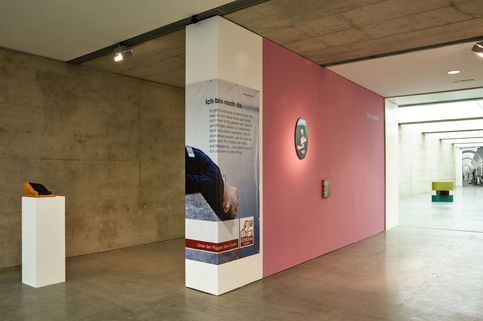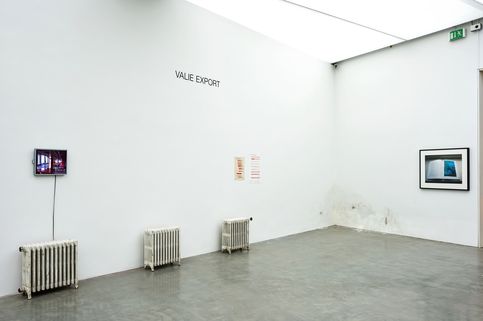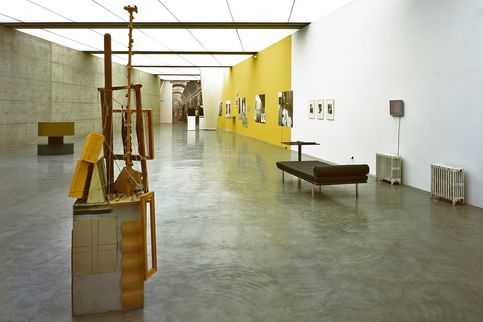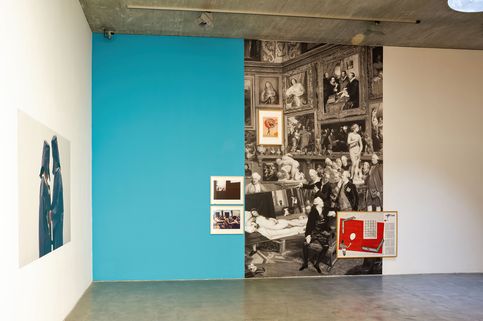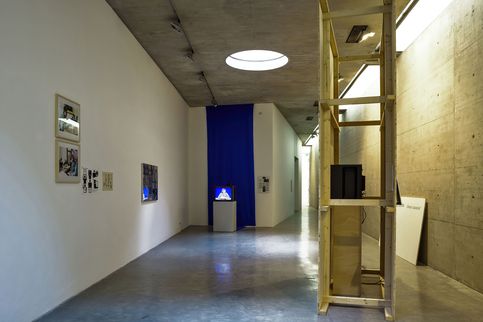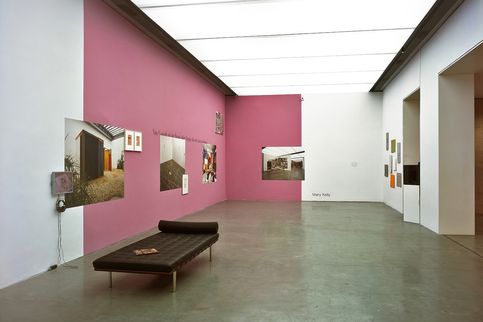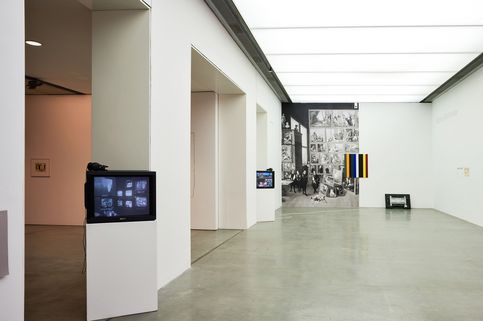The Content of Form
The Collection Represented by Helmut Draxler
Curator: Helmut Draxler
Exhibition coordinator: Ilse Lafer, curator, Generali Foundation
To mark the 25th anniversary of the Generali Foundation, three international curators—Guillaume Désanges, Helmut Draxler, and Gertrud Sandqvist—were invited to each organize a show using a unique presentation format to shed light from individual angles on the Generali Foundation Collection, its institutional and exhibition policies, and hence its contribution to historiography on the basis of institutional work. Additional discussions and lectures taking place throughout this anniversary year took their cue from the curators’ different personal approaches, the questions they raise concerning the definition of what is called Concept (Conceptual) art and what it means to collect and curate it, and their reflections on the relationship between Conceptual and historical display strategies and the artworks themselves.
Guillaume Désanges had turned his attention to the “pioneering days” of conceptual art in the 1960s and 1970s, embedding the works in a display that draws on the didactic formats used, for example, in exhibitions of cultural history. Helmut Draxler, meanwhile, focused on the complex interrelation between the principles of collecting and exhibiting.
Exhibiting and collecting: a reciprocal relation
Collections constantly move between the accumulation and the arrangement of objects, between their preservation and their exhibition. They develop their own logics and a historical thinking that is immediately bound up with the self-conception of modernity between knowledge and order, imposition and power, accumulation and extravagance. The collection itself has long become the object of a debate that is mostly about its modes of arrangement in space and its sequences in time. The modes of arrangement in space “represent” an order constituted by knowledge, capital, and power; the sequences in time engender a genealogical or evolutionary principle that confers a past and a future on this order.
The exhibition The Content of Form seeked to demonstrate that these codes of spatial and temporal arrangement are fundamental traits of modern thinking. It was accordingly meant to be something other than just a selection from the Generali Foundation’s collection: it was a curatorial-discursive project that explores the collection as a principle. Operating along three fundamental concepts—“representation,” “conversation,” and “genealogy”—that were modeled in the exhibition by details from historic paintings, a wall design is developed that comprised exhibition photographs from the history of the Generali Foundation, colors, and texts that relate to the selected works. The latter were thus always assigned to specific discursive and institutional contexts. Conversely, they could also be read as peculiar forms of articulation whose formal organization always already hints at the "logic of the collection" (Boris Groys). Considered in this light, collecting and exhibiting no longer appeared as extrinsic to the works; they just as importantly structured the works internally. Works, exhibitions, and the collection were revealed to be mutually interrelated modalities of symbolic production.
The fragility of the collection
The Content of Form lent the individual works an aura of the representative, while also rendering the collection’s aspects of contingency, marginality, and exclusivity tangible—for instance, by including exhibition photographs of a number of works that were not acquired for the collection. In its formal decisions, too, the exhibition tented to take a contrapuntal approach to the aesthetics of the Generali Foundation as it stands today, where modernist techniques have played a dominant role; the goal was to highlight the fragility of all decisions between historicization and adaptation to contemporary issues, between canonization and marginalization, between universalization and localization.
In addition, monitors in the concrete exhibition space were connected the collection to the depot, the corporate leadership, and the public sphere. The tensions between these diverse elements—between the wall design featuring texts and photographs, the monitors, and the works—would, it was hoped, invite complex associations, creating leeway for experiences that defy didactic resolution, and facilitate application of the collection’s imaginary “codes” to the concrete institutional and site-specific dynamics.
(Works by artists in the collection, bold): Fareed Armaly, Judith Barry, Lothar Baumgarten, Ernst Caramelle, Lygia Clark, Luis Camnitzer, Alice Creischer/Andreas Siekmann, Danica Dakić, Thomas Eggerer, Harun Farocki, Morgan Fisher, Gérard Fromanger, Rainer Ganahl, Isa Genzken, Dan Graham, Sanja Iveković, Brigitte Kowanz/Franz Graf, Simon Leung, Dorit Margreiter, Marta Minujín, Ree Morton, Antonio Muntadas, Oswald Oberhuber, Hélio Oiticica, Willem Oorebeek, Anna Oppermann, Muki Pakesch, Walter Pichler, Mathias Poledna, Florian Pumhösl, Gerwald Rockenschaub, Martha Rosler, Gerhard Rühm, Thomas Stimm, Andrea van der Straeten, Apolonija Šušteršič, Rini Tandon, Ian Wallace, Franz West, Stephen Willats, WGBH-TV, Heimo Zobernig.
Helmut Draxler is an art historian and cultural theorist; he lives in Berlin. He was director of the Munich Kunstverein from 1992 to 1995 and professor of aesthetic theory at the Merz Akademie Hochschule für Gestaltung, Stuttgart, from 1999 until 2012. Draxler was a member of the Generali Foundation’s Artistic Advisory Board from 1992 to 1994. Between 2004 and 2006, he was involved in the research project “Film and Biopolitics” at the Jan van Eyck Academie, Maastricht (with Sabeth Buchmann and Stephan Geene). From 2013 to 2014 he was professor of art theory and art education at the Academy of Fine Arts, Nuremberg. Helmut Draxler is Professor of Art Theory at the University of Applied Arts Vienna. Research foci include a theory of the communication of art and the thinking of history in the historiographies of modern and contemporary art. Draxler has also curated exhibitions, including Shandyism: Authorship as Genre at the Vienna Secession (2007). He has published widely on the theory and praxis of contemporary art. Writings include Gefährliche Substanzen: Zum Verhältnis von Kritik und Kunst (Berlin: b-books, 2007); Die Gewalt des Zusammenhangs: Raum, Referenz und Repräsentation bei Fareed Armaly (Berlin: b-books, 2007); Film, Avantgarde, Biopolitik (with Sabeth Buchmann und Stephan Geene, Vienna: Schlebrügge Editor) 2009 and Theorien der Passivität, (coedited with Kathrin Busch), 2013.
